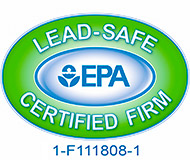Some people choose to keep them running anyway. The Gas Co. shuts down all it comes across.
March 15, 2001
The Orange County Register
By TERI SFORZA
The fire-prone furnaces that homeowners were warned about have caused at least five blazes since January in Southern California – and may have sparked four more, officials said.
"These faulty furnaces still pose a very real and present life and safety hazard," said Mike Freige, senior fire inspector in Torrance, who has led the charge to educate people about the danger.
"They're igniting wooden attics or admitting deadly carbon monoxide, which is colorless and odorless. People often don't know they've been affected until it's too late."
Still, many homeowners are loathe to spend $2,000 or so to replace the furnaces. Some choose to run them and take their chances, while others get creative.
"One family rigged up the clothes dryer so the hose goes into the house and heats the place," said Paul Hunter, spokesman for the Orange County Fire Authority.
Since New Year's Day, there have been at least five furnace fires in the region:
On Jan. 7, a furnace blaze destroyed the attic of a Plaza del Amo condominium in Torrance. Damage: $35,000.
On Jan. 16, a Lomita family was sleeping when their attic caught fire. Damage: $8,000.
On Jan. 18, smoke poured from a home in a Rolling Hills Estates home in Los Angeles. Significant smoke damage.
On Feb. 7, a Glendale homeowner raised his thermostat to 72 degrees; fire followed. Damage: $25,000.
On Feb. 8, at 3 a.m., a Downey family awoke to the stench of smoke. Damage: $15,000.
Freige is confirming that four more fires – in Whittier, Camarillo, Pismo Beach and Rancho Cucamonga – were also caused by the furnaces.
These furnaces – altered to meet California air-quality standards – have steel rods installed above the burners to reduce nitrogen oxide emissions. But the "nox rods" heat up, crack the furnace casing and let flames escape, posing a substantial fire risk.
In September, the U.S. Consumer Product Safety Commission issued a warning about the furnaces, which bear myriad brand names but were all made by one manufacturer: Consolidated Industries (formerly Premier). They were installed in about 190,000 homes between 1983 and 1994. Dozens of fires have been linked to the furnaces, but no injuries or deaths.
No furnace-linked fires have been reported in Orange County yet this year, but the faulty furnaces are everywhere. More than 184,000 homes, condominiums and apartments were built here during the 12 years the furnaces were on the market.
In the wake of the warning, The Gas Co. has shut off 2,900 suspect ; 1,300 of them were in Orange County.
One belonged to Melissa Oglevee of Irvine, and she was not happy about it. "It's insane," she said.
Oglevee had called The Gas Co. to have her furnace serviced. When a worker saw she had one of the suspect models, it was "red-tagged" and turned off. That was wrong, she said: Her furnace was just 40,000 BTUs (a measure of the heater's power), while the warning applied to furnaces over 60,000 BTUs.
"I told them that's the same as if there was a recall of the Taurus, and they refused to service an Explorer," Oglevee said. "They agreed, but wouldn't turn it back on."
She had a copy of a letter from the CPSC to The Gas Co. – saying that The Gas Co. may be shutting down faulty furnaces unnecessarily – but it didn't seem to matter.
"We're taking the safety high road," said Denise King, Gas Co. spokeswoman. "The CPSC does say that the safety alert is for furnaces rated 60,000 or higher, but there's no clear data concerning the smaller ones. They aren't saying there isn't a problem with the smaller ones; they're saying they haven't tested them. Better to err on the side of safety."
Studies on the smaller furnaces are under way. But the CPSC letter says that even furnaces on the suspect list can be used in the short term, so long as they're thoroughly inspected, there's no evidence of failure and safety improvements are made.
Since Oglevee couldn't persuade The Gas Co. to turn her furnace back on, she hired a heating contractor. He inspected the unit, declared it safe and turned it back on. That cost her $55.
Similar restarts have occurred in the Tustin complex that Robert Marrujo lives in – except with the bigger units targeted by the warning. That makes Marrujo nervous.
"A lot of people don't understand the gravity of the situation," said Marrujo, who lives in a complex of 35 town houses called Sevilla Homes, built by Fieldstone. "They're concerned with, 'Who's going to pay for my furnace?' I'm concerned about that, too – but I'm more concerned about fire and making sure people don't use them."
Marrujo has taken it upon himself to mail warnings to his neighbors and invite them to an informational meeting with four heating contractors. Replacement costs ranged from about $1,650 to $1,925.
Who'll get stuck paying? In Sevilla, and throughout Southern California, many homes are freshly past their 10-year warranty period. One of Fieldstone's homebuilding competitors, Shapell Industries, is covering the cost of replacing defective furnaces, even on homes that are out of warranty. But 396 Investment Co., Fieldstone's parent, has decided homeowners whose warranties have expired are on their own. The company is surveying homes still under warranty and will replace damaged furnaces.
Marrujo doesn't think that's fair, since problems with the heaters surfaced as early as 1994, when the homes were still under warranty. "It would be nice if they could at least split the cost with us, or use their buying power to get us a good deal, or something," Marrujo said. "This is a very serious problem."
Indeed, said fire inspector Freige. He fears that, as the weather warms, people will shut off their furnaces and forget about the problems until next fall. "Then the cold weather will be here again and they'll be lulled into a false sense of security, thinking 'It was OK last year, maybe we can get another year out of it.'
"That's dangerous," he said.
Copyright: Orange County Register 2001


